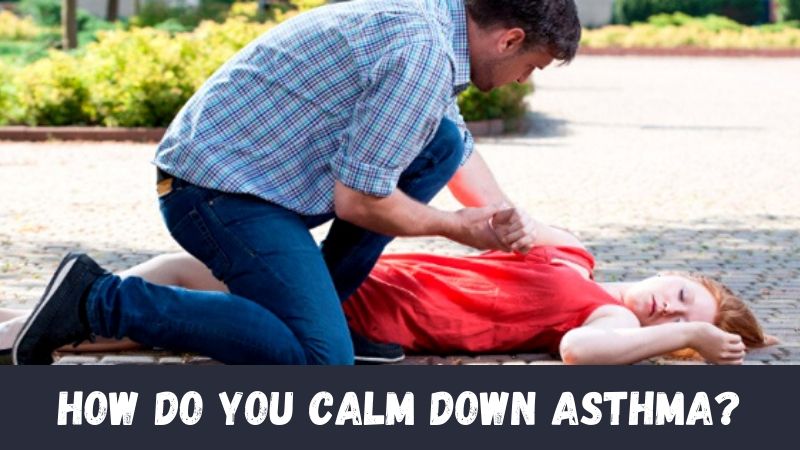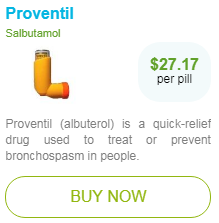
With an attack of bronchial asthma, the patient experiences a very sharp compression of the bronchial tissues, the production of a large amount of secretion begins, as a result of which the necessary amount of oxygen does not enter the lungs.
Therefore, it is important to take assistance measures that will help secretion, relieve the strong tension of the muscles of the bronchi, and remove the inflammatory processes along with an allergic reaction.
Features of an asthma attack
Typical bronchial asthma is easily diagnosed by the patient and the doctor. To quickly remove it, you need to know the symptoms that always begin before suffocation.
Most often they are the same in all patients, but there may also be individual signs that the patient should pay attention to. This will avoid complications and help to relieve choking.
An attack cannot be confused with anything. It develops very rapidly. A few seconds are enough for severe suffocation to begin. The patient begins to breathe faster, as he or she cannot fully exhale air from the lungs. The patient experiences fear and panic, trying to find a comfortable place to make it easier to breathe.
Important! If you notice the first symptoms of an asthma attack, it is necessary to immediately proceed to actions that will help the patient to make suffocation minimal in strength.
Symptoms of an asthma attack
- Before the onset of the attack, the patient begins to have severe shortness of breath;
- Whistling sounds and wheezing appear in the lungs, which can even be heard from a short distance;
- The patient has a feeling that his/her chest is full of air;
- The patient cannot exhale qualitatively;
- The patient makes an effort to exhale, leaning forward or resting on something;
- When exhaling, the shoulder muscles are involved;
- Frequent sneezing is possible;
- The skin turns pale or becomes cyanotic;
- Due to breathing difficulties, the patient cannot talk;
- The patient avoids unnecessary movements and tries to breathe;
- The patient’s condition does not improve even after a single dose of inhalation;
- The patient has a severe cough.
How to stop an asthma attack: step-by-step guidelines
During an attack, the patient should receive the first aid before the ambulance arrives. There is a special algorithm of actions that must be performed in the exact sequence.
- If the patient is on the street, and the attack began due to an allergy to pollen of plants, bring him or her into the room;
- If the patient is at home, open the windows to provide the person with a large amount of fresh air;
- Unfasten clothing in the chest area and remove the tie. There should be no restraint in the chest and neck;
- Give the patient an inhaler to relieve the attack;
- Remove from the room any allergens that adversely affect asthma;
- To remove fear, panic and nervous excitement, give the patient any soothing medicine: motherwort, valerian, or tranquilizer;
- During an attack, give a bronchodilator drug prescribed by a doctor in the form of an aerosol;
- If the attack is very severe, call an ambulance as quickly as possible.
Important! Each relative must know the action algorithm in order to provide quick assistance.
What is the best medicine for an asthma attack?
 An asthmatic should always have drugs on hand to help relieve the attack. First of all, it is necessary to use an inhaler, which will alleviate the condition. For this, short-acting drugs can be used. You can quickly relieve an asthma attack with the help of the effective bronchodilator Proventil (generic name – albuterol). It is called a “first aid” for an attack. Proventil and other similar medicines work by stimulating the receptors in the muscles of the respiratory tract, causing them to relax and expand, and provide relief from asthma symptoms. An asthma inhaler, by spraying the liquid it contains, turns it into a very fine mist that can be inhaled. Thanks to this fog, the chemical composition of an asthma inhaler effectively affects the muscles in the lungs.
An asthmatic should always have drugs on hand to help relieve the attack. First of all, it is necessary to use an inhaler, which will alleviate the condition. For this, short-acting drugs can be used. You can quickly relieve an asthma attack with the help of the effective bronchodilator Proventil (generic name – albuterol). It is called a “first aid” for an attack. Proventil and other similar medicines work by stimulating the receptors in the muscles of the respiratory tract, causing them to relax and expand, and provide relief from asthma symptoms. An asthma inhaler, by spraying the liquid it contains, turns it into a very fine mist that can be inhaled. Thanks to this fog, the chemical composition of an asthma inhaler effectively affects the muscles in the lungs.
If necessary, Proventil acts quickly, the effect is achieved 5-20 minutes after inhalation and lasts up to 2 hours. They also provide more or less immediate relief from asthma symptoms. However, asthma relief inhalers do not protect against future symptoms. This requires a different chemical composition.
The active ingredient of Proventil – albuterol – is in the list of essential medicines of the World Health Organization, which is defined as the most important medicine necessary for the basic health care system. Without this medication, the life of asthmatics would be much more complicated and potentially shorter! Proventil inhaler is quite expensive but its generic version from Canadian Pharmacy Mall is much cheaper, though has the same high efficiency.
If two inhalations within 10-15 minutes do not bring relief, the patient can do 2 more inhalations. Do not make more inhalations, as an overdose may occur manifested by nausea, headache, dizziness, or tachycardia.
How to relieve an attack without medication?
If the person has no drugs at hand during an asthma attack, it is necessary to empty the chest. To do this, un-button his or her shirt and take off a tie. It is recommended to sit on a hard surface or lean forward to make it easier to exhale air. If you have ammonia at home, moisten a cotton pad with it and inhale the vapor several times.
If suffocation intensifies, you can make a hot bath for the feet or hands.
Important! It is strictly forbidden to apply hot or cold to the chest area.
You can drink a decoction of nettles. Soda helps with choking. For this, 2 tablespoons of soda are diluted in a glass of hot water and 3 drops of iodine are added to the solution. Drink 3-4 sips every 20-30 minutes.
If suffocation has passed, it is necessary to lie down and perform breathing exercises.
What should you NOT do when someone is having an asthma attack?
When someone is having an asthma attack, it is not recommended to:
- use drugs that have not been prescribed;
- use doses higher than the maximum recommended;
- try to relieve spasm of the bronchi by any natural remedies;
- postpone a doctor’s call in serious condition.
One of the common reasons for the development of asthmatic status is the patient’s independent decision on going off your medication, reducing its dose. This is what patients often do when they feel better. This inevitably leads to an exacerbation of the disease. Therefore, if you have asthma, it is important to know the main rules of treatment.
How to prevent asthma attacks?
To make asthma attacks as rare as possible, you need to comply with the following preventive recommendations:
- regular visits to the doctor at least twice a year, even when you feel good;
- maximum avoidance of contact with an allergen, smoking, physical overload, emotional stress;
- strict implementation of treatment recommendations, coordination of drug compatibility (for example, beta-blockers affect the action of bronchodilator drugs);
- use of the smallest dose of a bronchodilator (if possible) in case of an attack;
- diet correction taking into account the tolerance of products;
- daily therapeutic gymnastics, including breathing;
- thorough wet cleaning of the room;
- self-monitoring of ventilation indicators using a peak flow meter, keeping a diary with the indication of drugs, doses, and measurement results.




